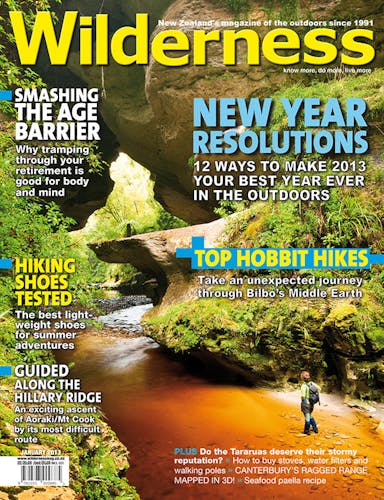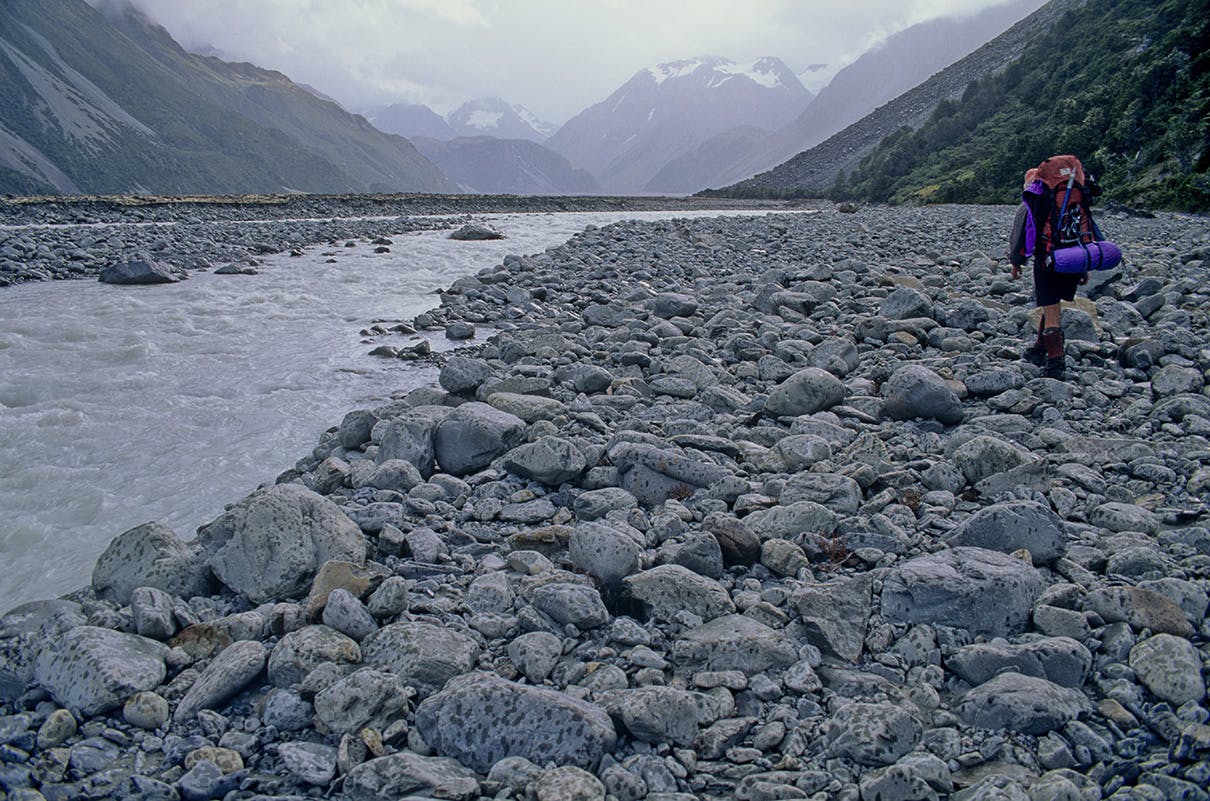Three places to these characteristic New Zealand rivers
Many New Zealand trampers have threaded their way up Canterbury’s braided rivers, crossing each milky strand thinking it was the last, before reaching one last ford, often unexpectedly deep. Fording many of the largest rivers, however, would be impossible if the river’s full force was concentrated into one channel and not dispersed over several braids. On one occasion I remember crossing a chest-deep braid of the Rakaia, very thankful we’d already crossed some of the river’s volume in other braids.
Braided rivers form only where the right combination of gradient and sediment load occurs. Young, easily eroded mountains like the Southern Alps create the right sediment load, while the Canterbury plains provide the perfect gradient. Consequently, Canterbury has 60 per cent of New Zealand’s braided rivers.
Although not unique to New Zealand, braided rivers occur only in a handful of other places, including Alaska, Canada, Argentina and Tibet – all of which also boast these specific topographical characteristics.
In New Zealand, braided rivers provide habitat for a range of plants and animals, including the endangered kaki, or black stilt. Banded dotterels, wrybills, skinks and a number of fascinating arthropods – like the giant dragonfly – also live in braided river valleys. Curious plants like the cushion forget-me-not (Myosotis uniflora), willowherb (Epilobium) and grey woollyhead (Craspedia lanata) grow on the riverbed, many of them highly specialized to cope with the dynamic landscape. Fierce, dry winds, bitterly cold winters and frequent floods are just some of the environmental conditions the plants and animals have to cope with. It’s often in these details, the miniature world beneath your boots, that braided rivers are at their most fascinating.
Pukaki River, Canterbury
The Mackenzie Basin, and the Pukaki River in particular, are home to one of New Zealand’s most endangered bird, the kaki or black stilt. It’s also the world’s rarest wading bird.
DOC has a captive breeding programme to help the bird’s numbers, which are threatened by predation by cats and stoats, and their habitat altered by introduced weeds. DOC has a viewing hide at their breeding centre, near Twizel. The Pukaki is also famed for draining the great glaciers beneath Aoraki/Mt Cook.
Waimakariri River, Arthur’s Pass National Park, Canterbury
Trampers often have a love-hate relationship with the Waimak. It’s the access route to so many tramps: the Three Passes, Avalanche Peak-Crow Hut circuit, Waimakariri Col and Barker Hut; but can be a mind-shattering gravel bash if you think too much about how far there is to go. Learn to indentify some of the plants and animals, and you might find fresh interest in the Waimak.
Rakaia River, Canterbury
The Rakaia drains some spectacular Canterbury mountains, and provides access to classic tramps like the Whitcombe Pass trip. But it’s not a river to be trifled with; many people have met a watery death in its powerful currents.








